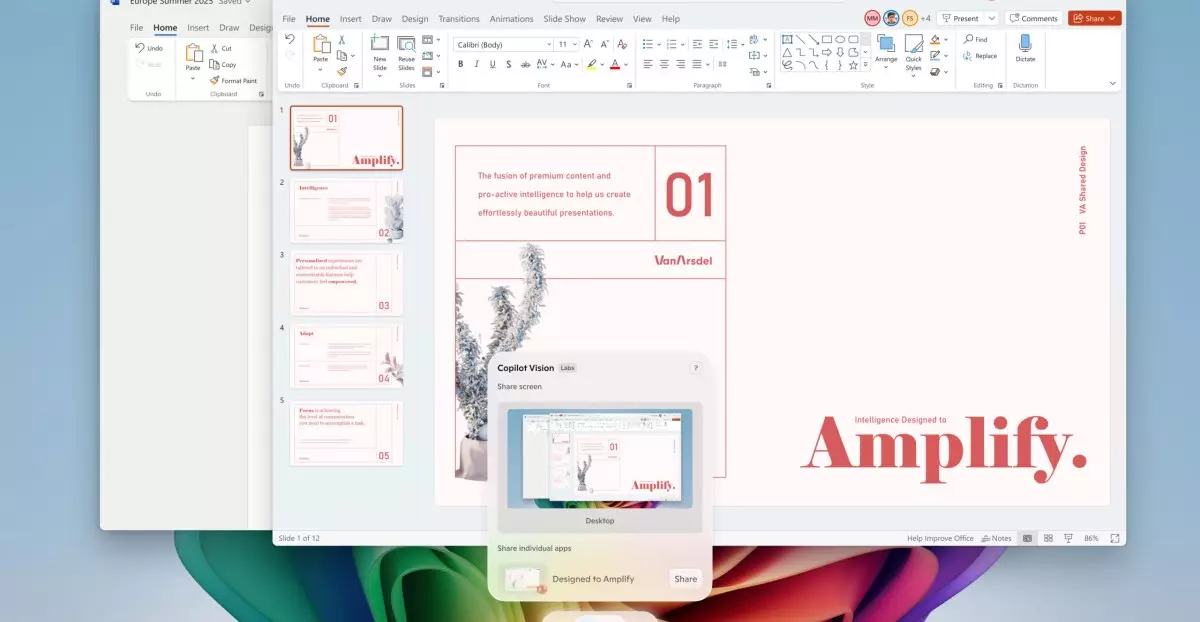In a strategic move that underscores its commitment to AI innovation, Microsoft is rolling out a suite of advanced features for Windows 11, with Copilot Vision standing at the forefront. This new tool promises to transform how users engage with their desktops by offering real-time, screen-wide analysis powered by artificial intelligence. Unlike traditional functionalities that require manual search or navigation, Copilot Vision aims to deliver intuitive, context-aware assistance—an ambitious leap toward seamless human-computer interaction.
What makes this particularly compelling is its ability to scan everything visible on the screen. Whether you’re examining a complex spreadsheet, editing a photo, or browsing multiple web pages, Copilot Vision can interpret the content and respond to natural language queries. The potential for simplifying workflows is immense, as users can ask questions like, “What is this chart showing?” or “How can I enhance the lighting in this photo?” and receive immediate, relevant guidance. This feature exemplifies a future where AI becomes an invisible assistant, reducing cognitive load and empowering users to focus more on creative or strategic tasks.
However, this bold vision is not without its pitfalls. The transparency around how data is processed and the potential privacy implications raise questions. With AI capable of visual analysis comes a need for rigorous safeguards against misuse or inadvertent data leaks. Moreover, the reliance on AI interpretation can sometimes lead to inaccuracies, which might frustrate users expecting flawless assistance. Thus, while Copilot Vision hints at a transformative paradigm, it necessitates careful implementation grounded in privacy, security, and user trust.
Exclusive Enhancements: Spotting a Class Divide in AI Accessibility
Microsoft’s approach of differentiating features between standard Windows 11 devices and those with Copilot Plus — particularly Snapdragon-powered PCs — reveals an underlying strategy to encourage adoption of premium hardware while creating a perceived value gap. Users with Copilot Plus devices gain access to AI-powered agents within system settings, enabling natural language commands to perform complex tasks automatically. For example, asking the agent to “enable quiet hours” or “connect Bluetooth device” transforms traditional, often multi-step processes into single utterances.
This segmentation, however, risks widening the digital divide. High-end hardware becomes a gateway to more intelligent, streamlined experiences, leaving regular users to experience only partial benefits. While the free tier provides foundational AI tools like the updated Copilot app and AI-enhanced screenshot tools, the truly innovative features seem tethered to premium devices. This raises critical questions about equitable technology access. Will this strategy push more consumers towards costly upgrades just to keep pace with AI functionality? Or could it fragment the user community, creating a tiered environment of digital competence?
Furthermore, the emphasis on device-specific features suggests that Microsoft sees hardware as a pivotal component of AI integration. Snapdragon chips, known for their efficiency and mobility, are positioned to unlock more immediate and intelligent responses, which could redefine portable computing. Yet, they also cement the idea that without high-end hardware, users might not experience the full potential of Windows 11’s AI advancements, fostering an exclusivity that might be problematic in the broader context of digital inclusivity.
Embracing AI’s Promise and Pitfalls in Everyday Computing
Microsoft’s AI-powered tools like the “Click to Do” feature exemplify a shift toward making routine tasks faster and more intuitive. Whether it’s drafting documents, scheduling meetings, or practicing language skills with Reading Coach, these functionalities are designed to amplify productivity and reduce frustration. The AI-driven image editing tools in Paint and Photos—like sticker generation or advanced object selection—highlight how AI is becoming embedded not only in productivity but also in creativity.
While this integration provides undeniable convenience, it also invites skepticism. The reliance on AI for content creation or editing could diminish user agency by over-automating processes that once required skill and understanding. There’s a palpable concern that users might become passive consumers of AI-generated content rather than active creators. Moreover, AI’s propensity to err—whether it’s misinterpreting instructions or making flawed edits—necessitates critical oversight, lest users overtrust these automated tools.
Significantly, Microsoft is also improving fundamental features indiscriminately across all Windows 11 devices, such as the new color picker and automatic issue fixes for system stability. This strategy indicates an understanding that AI and adaptive tools should be accessible from the outset, fostering loyalty and continuous engagement. But it also underscores a broader debate: can we truly trust AI to handle core system functions, or are we merely trading security and stability for convenience? Navigating this balance will define users’ trust in these smarter operating systems.
In the end, Microsoft’s aggressive push into AI-enhanced Windows 11 signals both an exciting horizon and a cautionary tale. It’s a testament to how far AI has come, yet it also reflects the growing responsibility tech giants bear in ensuring these tools serve all users ethically and effectively. The future of Windows—if these developments are well managed—could be remarkably intelligent, intuitive, and empowering. But only time will tell if this AI-era truly elevates user experience or complicates it with new layers of complexity and inequality.


Leave a Reply